Which is good for your health, steamed or raw rice? This question matters more than you might think, especially for health-conscious individuals, fitness enthusiasts, and anyone managing specific dietary needs.
The steamed rice vs raw rice health benefits debate goes beyond simple taste preferences. Your choice affects how well your body processes nutrients, your digestive comfort, and even your weight management goals.
This guide breaks down the rice digestibility comparison between steamed and raw varieties, examines the raw rice safety risks you need to know about, and explores how steamed rice weight loss benefits stack up against uncooked alternatives. You’ll discover which preparation method supports your health goals and when each option makes the most sense for your lifestyle.
Understanding the Nutritional Differences Between Steamed and Raw Rice
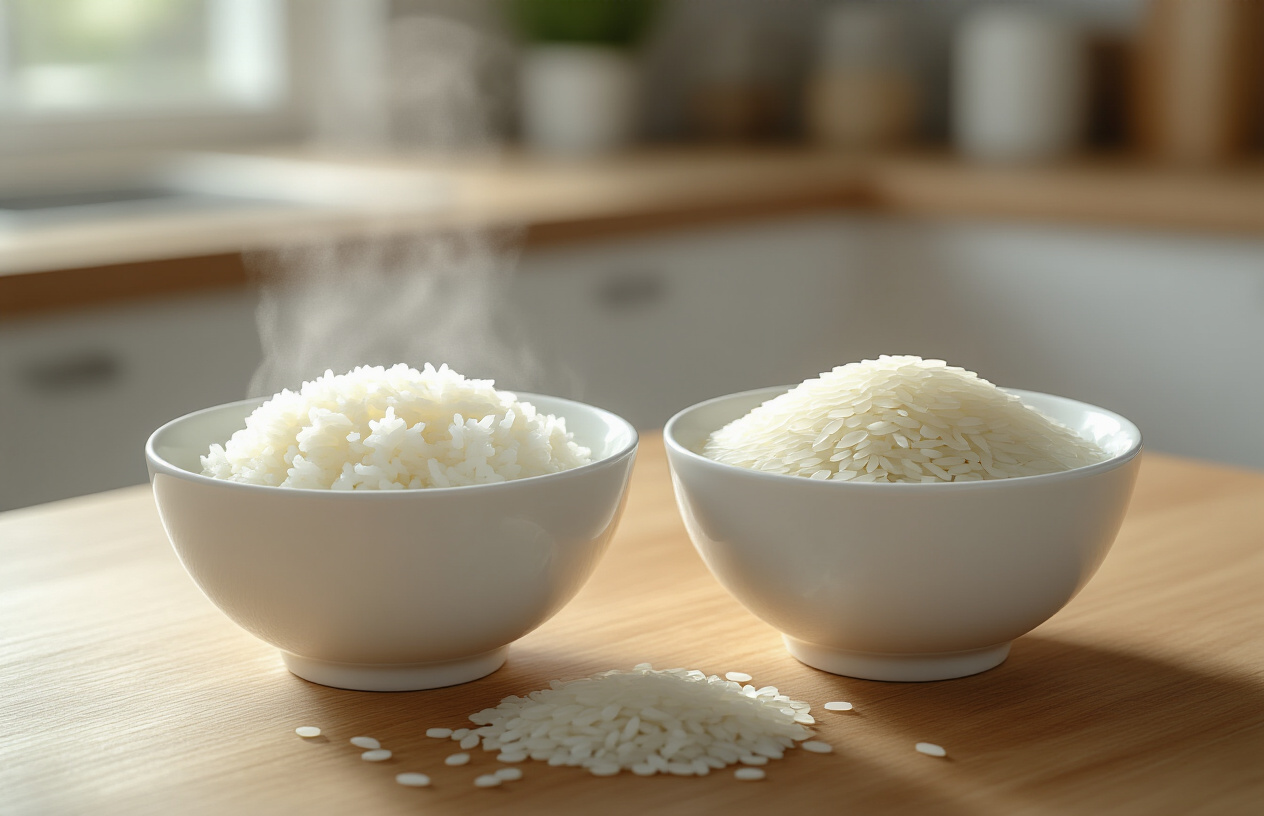
Caloric Content Comparison Per Serving
Raw rice contains significantly more calories per serving compared to steamed rice due to water absorption during cooking. A cup of uncooked white rice contains approximately 730 calories, while the same amount transforms into about 3-4 cups of steamed rice with roughly 200-240 calories per cooked cup. This dramatic difference occurs because steamed rice absorbs 2-3 times its weight in water, creating volume without adding calories.
Brown rice follows a similar pattern, with raw brown rice containing about 685 calories per cup versus 218 calories per cup when steamed. The cooked rice nutrition facts show that the cooking process doesn’t eliminate calories but redistributes them across a larger volume, making portion control easier for those focused on steamed rice weight loss goals.
Vitamin and Mineral Retention Rates
Rice cooking methods nutrition significantly impacts vitamin and mineral availability. Steaming preserves most B-vitamins, including thiamine, riboflavin, and niacin, with retention rates of 70-85%. Water-soluble vitamins like folate experience some loss during steaming, dropping by approximately 15-25%.
Mineral retention varies by type:
| Mineral | Raw Rice | Steamed Rice | Retention Rate |
|---|---|---|---|
| Iron | 100% | 85-90% | High |
| Magnesium | 100% | 80-85% | Moderate |
| Zinc | 100% | 75-80% | Moderate |
| Phosphorus | 100% | 90-95% | High |
The steaming process actually improves bioavailability of certain minerals by breaking down phytic acid, which normally binds minerals and prevents absorption.
Fiber Content Variations
Fiber content remains relatively stable during steaming, but the cooking process affects fiber structure and digestibility. Raw brown rice contains about 3.5 grams of fiber per cup, while steamed brown rice maintains approximately 3.2 grams per cup when accounting for water content.
White rice naturally contains less fiber (0.6 grams raw, 0.4 grams steamed per cup), making brown rice vs white rice steamed comparisons important for digestive health. The steaming process softens insoluble fiber, making it gentler on the digestive system while maintaining most of its bulk-forming properties.
Protein Availability Differences
Steaming enhances protein digestibility without significantly reducing total protein content. Raw rice proteins are largely inaccessible due to their complex structure within starch granules. The steamed rice vs raw rice health benefits become apparent when considering protein utilization – steaming increases protein digestibility from roughly 60% to 85-90%.
Heat treatment denatures rice proteins, breaking down their secondary and tertiary structures, which allows digestive enzymes better access. This improved protein availability makes steamed rice a more effective protein source, particularly important for individuals following plant-based diets where rice serves as a significant protein contributor.
Digestibility and Absorption Benefits of Each Rice Type
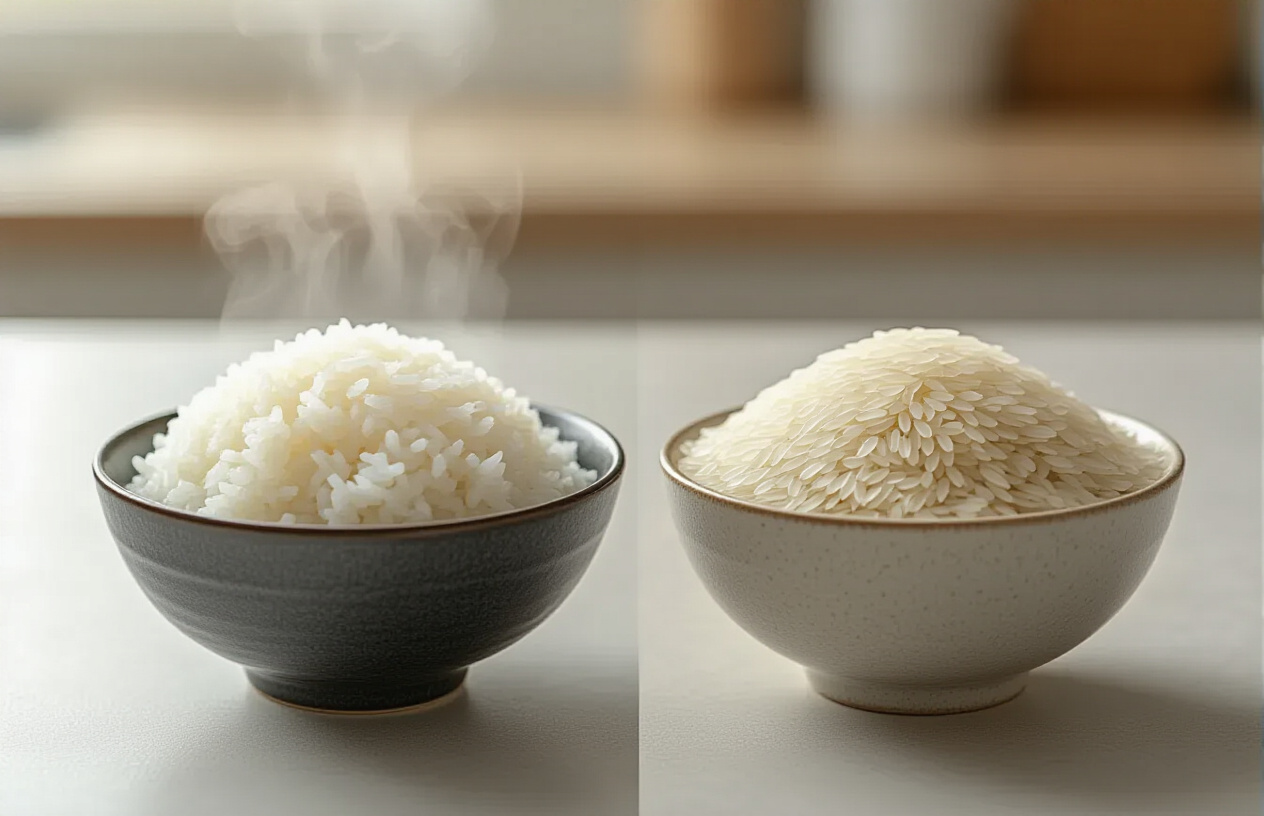
Ease of digestion for sensitive stomachs
Steamed rice wins hands down when it comes to digestibility, especially for people dealing with stomach sensitivities or digestive issues. The cooking process breaks down the tough starch granules and makes the rice much gentler on your digestive system. Raw rice, on the other hand, contains resistant starches and cellulose fibers that your stomach simply can’t handle properly.
When you have conditions like gastritis, irritable bowel syndrome, or you’re recovering from stomach flu, steamed rice becomes your digestive system’s best friend. The soft texture requires minimal chewing and passes through your stomach without causing irritation or excessive acid production. Many doctors actually recommend plain steamed white rice as part of the BRAT diet (bananas, rice, applesauce, toast) for digestive recovery.
Raw rice presents serious digestibility challenges. Your body lacks the necessary enzymes to break down uncooked rice grains effectively, leading to stomach discomfort, bloating, and potential intestinal blockages. The hard texture can also scratch your digestive tract lining, causing additional irritation.
Blood sugar impact and glycemic response
The cooking method dramatically affects how rice impacts your blood sugar levels. Steamed rice vs raw rice health benefits show significant differences in glycemic response, making this a crucial consideration for diabetes management and overall metabolic health.
Steamed rice has a higher glycemic index because the cooking process breaks down starches into easily digestible sugars. White steamed rice typically ranks between 70-90 on the glycemic index, causing faster blood sugar spikes. However, you can lower this impact by choosing brown rice or letting cooked rice cool before eating, which increases resistant starch content.
Raw rice actually has a lower theoretical glycemic impact, but here’s the catch – you shouldn’t be eating it anyway due to safety concerns. The resistant starches in uncooked rice would theoretically cause slower sugar absorption, but the digestive problems and potential health risks far outweigh any glycemic benefits.
For better blood sugar control with steamed rice, try these strategies:
- Pair rice with protein and healthy fats
- Choose brown rice over white varieties
- Keep portion sizes moderate (about 1/2 cup cooked)
- Add vinegar or lemon juice to lower the glycemic response
Nutrient absorption efficiency
Your body absorbs nutrients much more effectively from steamed rice compared to raw grains. The cooking process doesn’t just make rice safer to eat – it actually unlocks nutritional value that would otherwise remain trapped in the grain structure.
Heat treatment breaks down anti-nutritional factors like phytic acid, which can bind to minerals like iron, zinc, and calcium, preventing your body from absorbing them. Steamed rice allows your digestive system to access B vitamins, particularly thiamine and niacin, more readily than raw grains would.
Cooked rice nutrition facts show that while some water-soluble vitamins may decrease slightly during cooking, the overall bioavailability of nutrients increases significantly. Your intestines can extract amino acids from the protein content more efficiently when the rice is properly cooked and softened.
Raw rice presents major absorption challenges because your digestive system can’t break down the tough outer layers and dense starch structures. Even if raw rice contained more nutrients on paper, your body would struggle to extract and use them effectively. The digestible rice benefits from proper cooking far outweigh any minor nutrient losses that occur during the steaming process.
The bottom line: steamed rice delivers better nutrition to your body because absorption efficiency matters more than raw nutrient content that your digestive system can’t access.
Health Risks and Safety Considerations
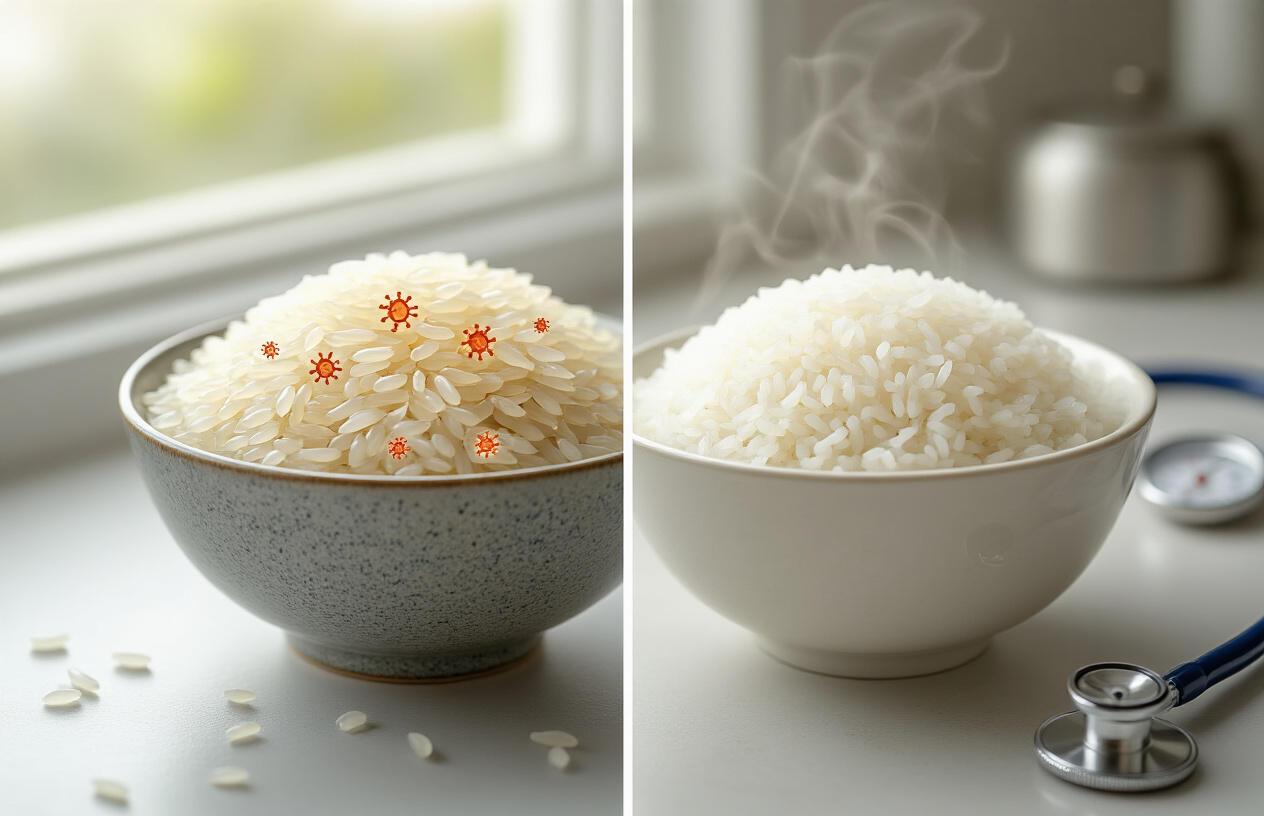
Bacterial Contamination Dangers in Raw Rice
Raw rice poses serious bacterial contamination risks that can lead to severe food poisoning. Bacillus cereus bacteria commonly inhabit uncooked rice grains and produce heat-resistant spores that survive washing. When consumed raw, these bacteria multiply rapidly in the digestive system, releasing toxins that cause nausea, vomiting, and diarrhea within hours.
Salmonella and E. coli contamination also occurs in raw rice through improper storage or processing. These pathogens thrive in the moist environment of uncooked grains and can cause life-threatening infections, particularly in children, elderly individuals, and immunocompromised people. Steaming rice at temperatures above 165°F effectively eliminates these harmful bacteria, making it the safer choice for consumption.
Anti-Nutrient Compounds in Uncooked Grains
Uncooked rice contains several anti-nutrient compounds that interfere with nutrient absorption and digestion. Phytic acid, the most problematic anti-nutrient in raw rice, binds to essential minerals like iron, zinc, and calcium, preventing their absorption in the intestines. This mineral-blocking effect can contribute to deficiencies over time.
Lectins present in raw rice can damage the intestinal lining and trigger inflammatory responses. These proteins resist digestion and may cause digestive discomfort, bloating, and compromised gut health. Raw rice also contains enzyme inhibitors that block the body’s natural digestive enzymes, making nutrient extraction extremely difficult.
Steaming rice breaks down these anti-nutrient compounds significantly. The heat treatment neutralizes lectins, reduces phytic acid content, and deactivates enzyme inhibitors, allowing better nutrient absorption and improved digestibility compared to raw rice consumption.
Digestive Complications from Raw Consumption
Raw rice consumption frequently leads to severe digestive complications due to its indigestible structure. The hard, fibrous nature of uncooked grains can cause mechanical damage to the digestive tract, including mouth injuries, esophageal scratches, and stomach irritation.
Intestinal blockages represent a serious risk when consuming raw rice regularly. The grains can accumulate in the digestive system, forming hard masses that obstruct normal food passage. This condition often requires medical intervention and can become life-threatening if left untreated.
Raw rice also triggers excessive gas production as intestinal bacteria attempt to ferment the indigestible starches. This fermentation process causes painful bloating, cramping, and uncomfortable digestive distress that can persist for hours or days.
Food Poisoning Prevention Strategies
Proper rice preparation eliminates most health risks associated with rice consumption. Steam rice thoroughly at temperatures reaching 212°F for at least 10-15 minutes to ensure complete bacterial elimination. Use a 2:1 water-to-rice ratio and maintain consistent heat throughout the cooking process.
Store cooked rice properly to prevent bacterial regrowth. Refrigerate leftover steamed rice within two hours of cooking and consume within three days. Avoid leaving cooked rice at room temperature for extended periods, as this creates ideal conditions for Bacillus cereus proliferation.
When reheating steamed rice, ensure it reaches 165°F throughout to eliminate any bacteria that may have developed during storage. Never consume rice that has been left out overnight or shows signs of spoilage like unusual odors or slimy texture.
Choose high-quality rice from reputable sources and inspect grains before cooking. Rinse rice thoroughly before steaming to remove surface contaminants and debris. These simple food safety practices make steamed rice a nutritious, safe option while eliminating the significant health risks associated with raw rice consumption.
Weight Management and Metabolic Effects
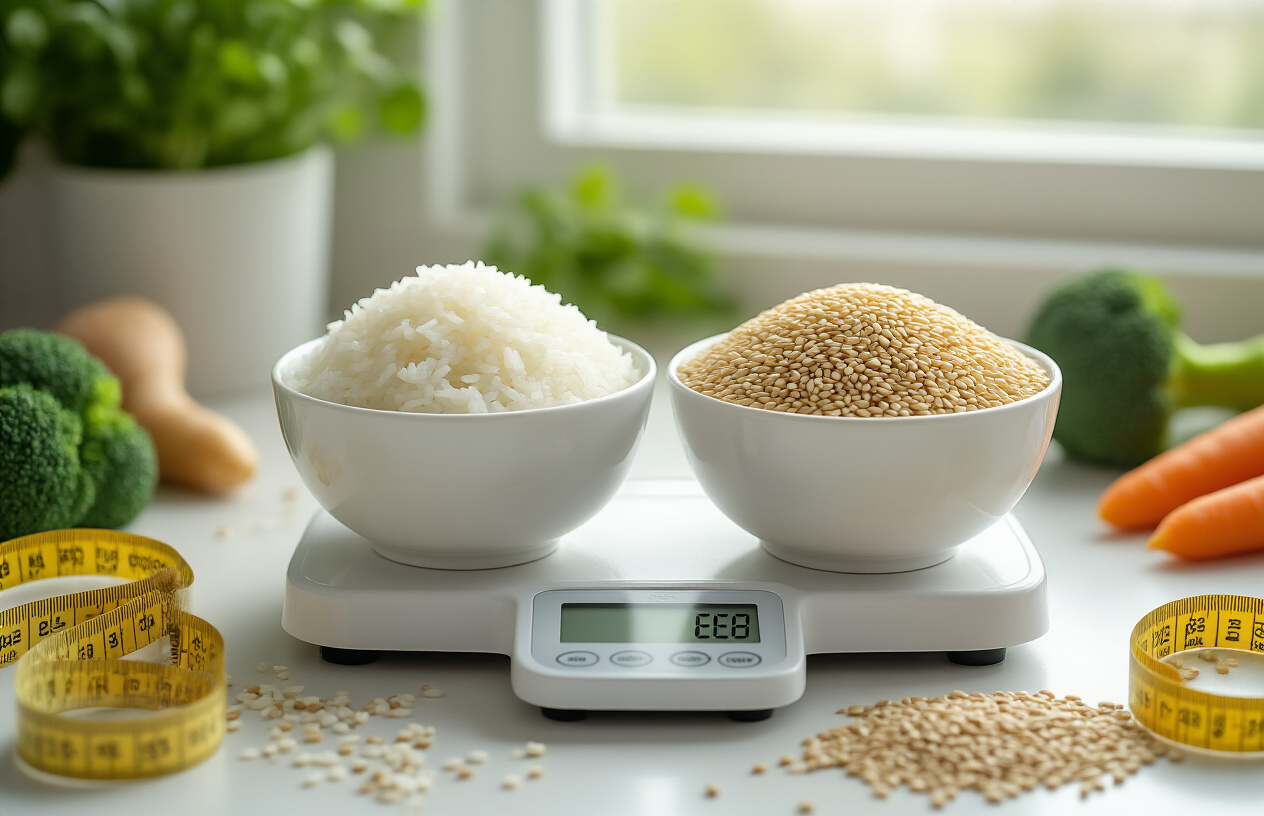
Calorie Density Impact on Weight Control
When comparing steamed rice vs raw rice health benefits for weight management, the calorie density difference plays a crucial role. Steamed rice contains approximately 130 calories per 100 grams, while the same amount of raw rice packs around 350 calories. This dramatic difference occurs because cooking rice with water increases its volume significantly – raw rice absorbs water and expands up to three times its original size.
For people tracking calories, this expansion means you get more food volume with fewer calories when eating steamed rice. A cup of cooked rice delivers the same satisfaction as a much smaller portion of raw rice would theoretically provide, though raw rice consumption isn’t recommended for safety reasons.
The water content in steamed rice also contributes to its lower calorie density. This characteristic makes steamed rice weight loss efforts more manageable since you can eat larger portions while controlling total caloric intake.
Satiety Levels and Hunger Management
Steamed rice offers superior satiety compared to its raw counterpart due to several factors. The cooking process gelatinizes the starch, making it more filling and satisfying. Cooked rice nutrition facts show that the expanded, softened grains create a sense of fullness that lasts longer.
The fiber structure in steamed rice, particularly in brown varieties, becomes more accessible during cooking. This enhanced fiber availability contributes to:
- Slower gastric emptying
- Extended feeling of fullness
- Better portion control
- Reduced snacking between meals
Raw rice, being extremely hard and difficult to digest, doesn’t provide the same satiety signals. The body struggles to process uncooked grains effectively, leading to digestive discomfort rather than satisfaction.
Metabolic Rate Influence
Rice cooking methods nutrition impacts your metabolic rate in several ways. Steamed rice requires less energy to digest compared to raw rice, allowing your body to allocate energy more efficiently. The digestible rice benefits include smoother metabolic processing and better nutrient utilization.
Cooked rice also has a more predictable impact on blood sugar levels. The gelatinized starches in steamed rice are broken down at a steady rate, preventing dramatic spikes and crashes that can disrupt metabolic function. Brown rice vs white rice steamed comparisons show that both cooked varieties offer better metabolic stability than any raw grain consumption attempts.
The thermic effect of food – energy required for digestion – is optimized with properly cooked rice, supporting overall metabolic health while minimizing digestive stress.
Specific Health Conditions and Rice Preparation Recommendations
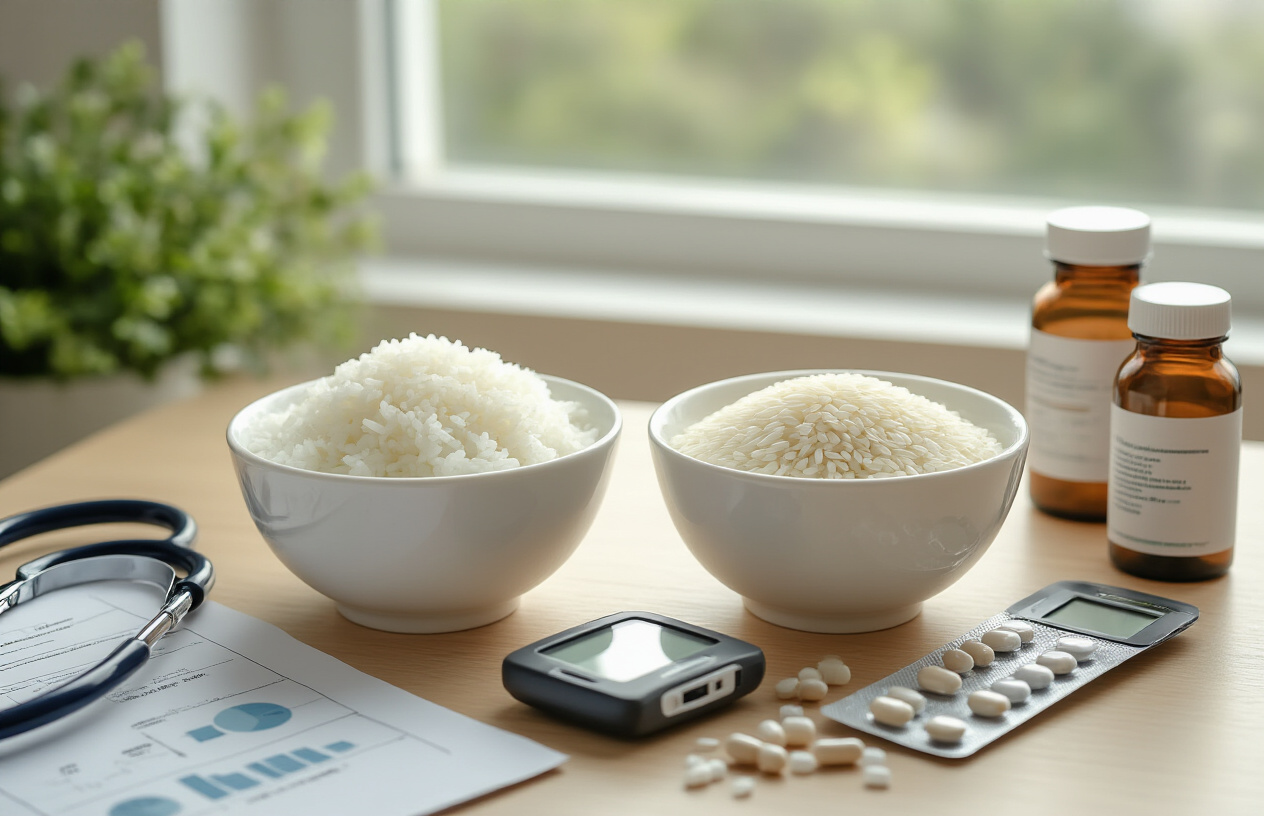
Diabetes Management Considerations
People with diabetes need to pay close attention to how rice preparation affects their blood sugar levels. Steamed rice vs raw rice health benefits become especially important when managing glucose spikes. Steamed rice has a higher glycemic index, meaning it can cause faster blood sugar increases compared to alternatives.
The rice preparation health effects matter significantly for diabetics. When rice is cooked and cooled, some starch converts to resistant starch, which helps slow glucose absorption. This means leftover steamed rice eaten cold or reheated might actually be better for blood sugar control than freshly cooked hot rice.
White steamed rice should be limited for diabetics, while brown rice offers more fiber and nutrients that help stabilize blood sugar. Portion control remains crucial regardless of preparation method. Pairing steamed rice with protein and healthy fats can help reduce the overall glycemic impact of meals.
Digestive Disorder Accommodations
Raw rice poses serious digestive risks and should never be consumed by people with digestive disorders. The hard, uncooked grains can cause intestinal blockages and contain harmful bacteria that compromised digestive systems can’t handle.
Digestible rice benefits shine when rice is properly steamed. People with inflammatory bowel disease, Crohn’s disease, or ulcerative colitis often find white steamed rice easier to digest than brown rice. The cooking process breaks down tough fibers and makes nutrients more accessible.
Those recovering from gastroenteritis or dealing with sensitive stomachs should stick to plain steamed white rice. It’s bland, easy to digest, and provides gentle energy without irritating inflamed intestinal lining. Adding small amounts of salt can help replace electrolytes lost during illness.
People with celiac disease can safely enjoy steamed rice as a gluten-free carbohydrate source, making it a valuable dietary staple for managing their condition.
Heart Health Optimization
Steamed rice weight loss connections often overlook heart health benefits. Brown rice contains more magnesium, which supports healthy blood pressure levels. The fiber in brown steamed rice also helps lower cholesterol when part of a balanced diet.
Rice cooking methods nutrition affects heart health differently. Steaming preserves more nutrients compared to boiling, where some vitamins leach into cooking water. This makes steamed preparation the better choice for maximizing heart-healthy compounds.
White steamed rice, while less nutritious than brown, still provides energy without added saturated fats. People with heart conditions should focus on portion sizes and pair rice with lean proteins and vegetables rather than high-sodium or fatty accompaniments.
The potassium in rice supports healthy blood pressure, but this benefit only comes from properly cooked rice – never raw.
Athletic Performance Enhancement
Athletes need easily digestible carbohydrates for energy, making steamed rice an excellent choice. Cooked rice nutrition facts show that steaming preserves energy-providing carbs while making them quickly available to working muscles.
Pre-workout meals benefit from white steamed rice because it digests quickly and won’t cause stomach upset during training. Post-workout, athletes can choose brown steamed rice for sustained energy release and additional nutrients that support recovery.
The rice digestibility comparison clearly favors steamed rice for athletic performance. Raw rice would be impossible to digest and potentially dangerous, while steamed rice provides immediate and sustained energy depending on the variety chosen.
Timing matters for athletes – white steamed rice works best within 1-3 hours before training, while brown steamed rice suits post-workout recovery meals when paired with protein.
Age-Related Dietary Modifications
Older adults often have changing nutritional needs that affect rice choices. Rice health considerations become more important with age as digestive efficiency typically decreases and medication interactions increase.
Seniors may find white steamed rice easier to chew and digest than tougher brown varieties. The soft texture reduces choking risks while still providing necessary carbohydrates for energy and brain function.
Elderly individuals taking certain medications should discuss rice consumption with healthcare providers, as some drugs affect how carbohydrates are processed. Blood sugar control becomes increasingly important with age, making portion awareness crucial.
Children and teenagers can handle both white and brown steamed rice well, with brown rice providing extra nutrients for growth and development. Parents should never give raw rice to children due to choking and digestive risks.
Pregnant women benefit from the folate in enriched steamed rice, which supports fetal development. The easy digestibility helps manage morning sickness while providing necessary nutrition.
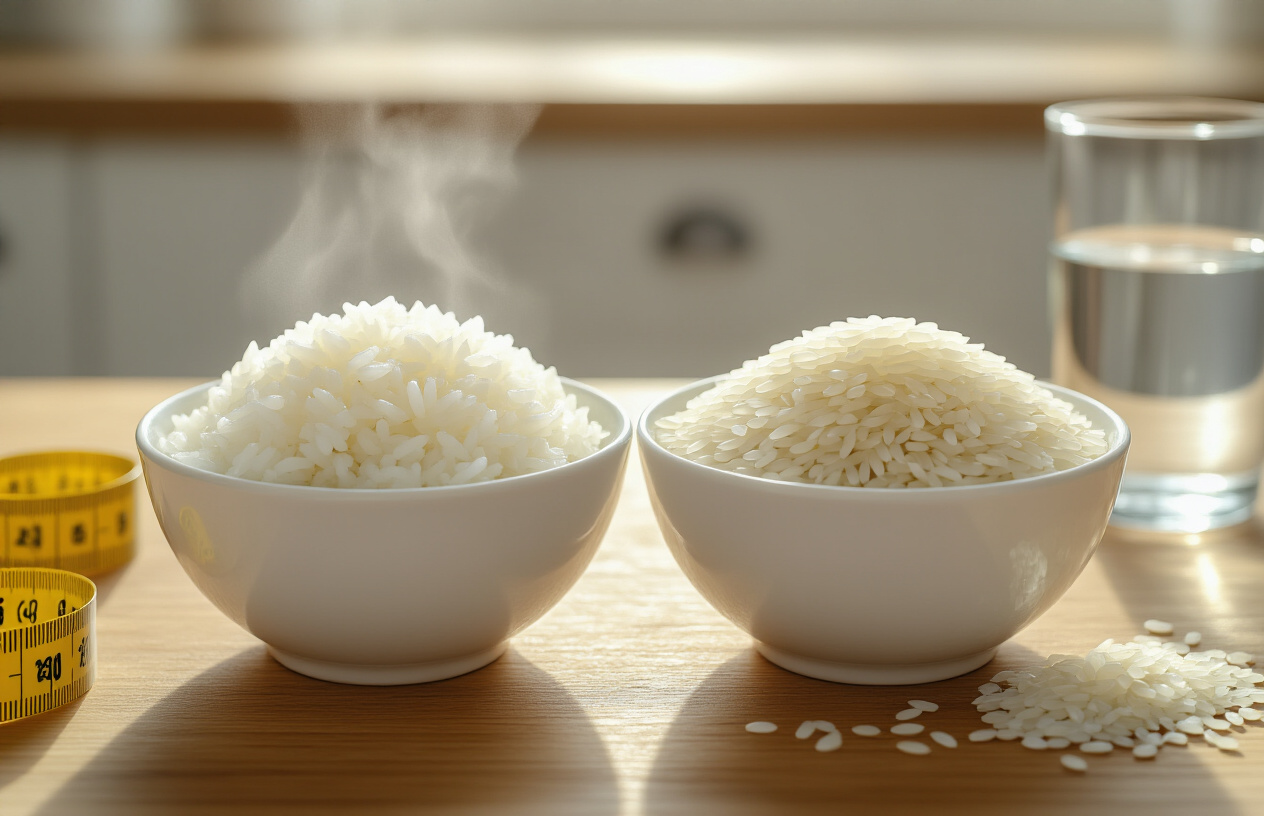
Both steamed and raw rice offer unique nutritional benefits that can support your health goals. Steamed rice provides better digestibility and safer consumption, making it easier for your body to absorb nutrients and avoid potential health risks. Raw rice, while retaining more vitamins and minerals, comes with safety concerns and digestibility challenges that most people should consider carefully.
The best choice for your health really depends on your specific needs and circumstances. If you’re managing diabetes or trying to lose weight, steamed brown rice might be your best bet. For those with sensitive stomachs or digestive issues, well-cooked rice will be gentler on your system. Listen to your body, consider your health goals, and don’t be afraid to experiment with different preparation methods to find what works best for you.









